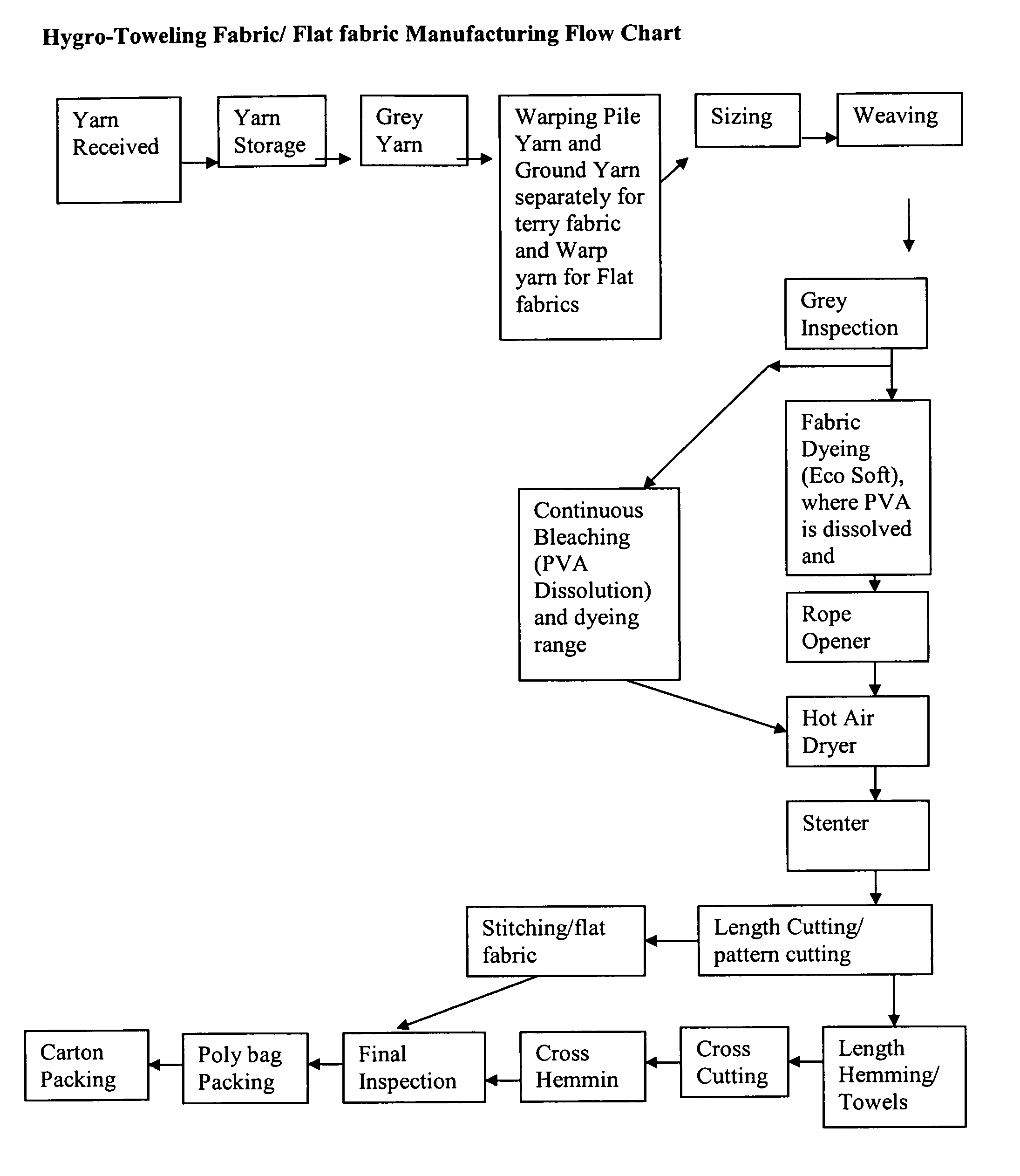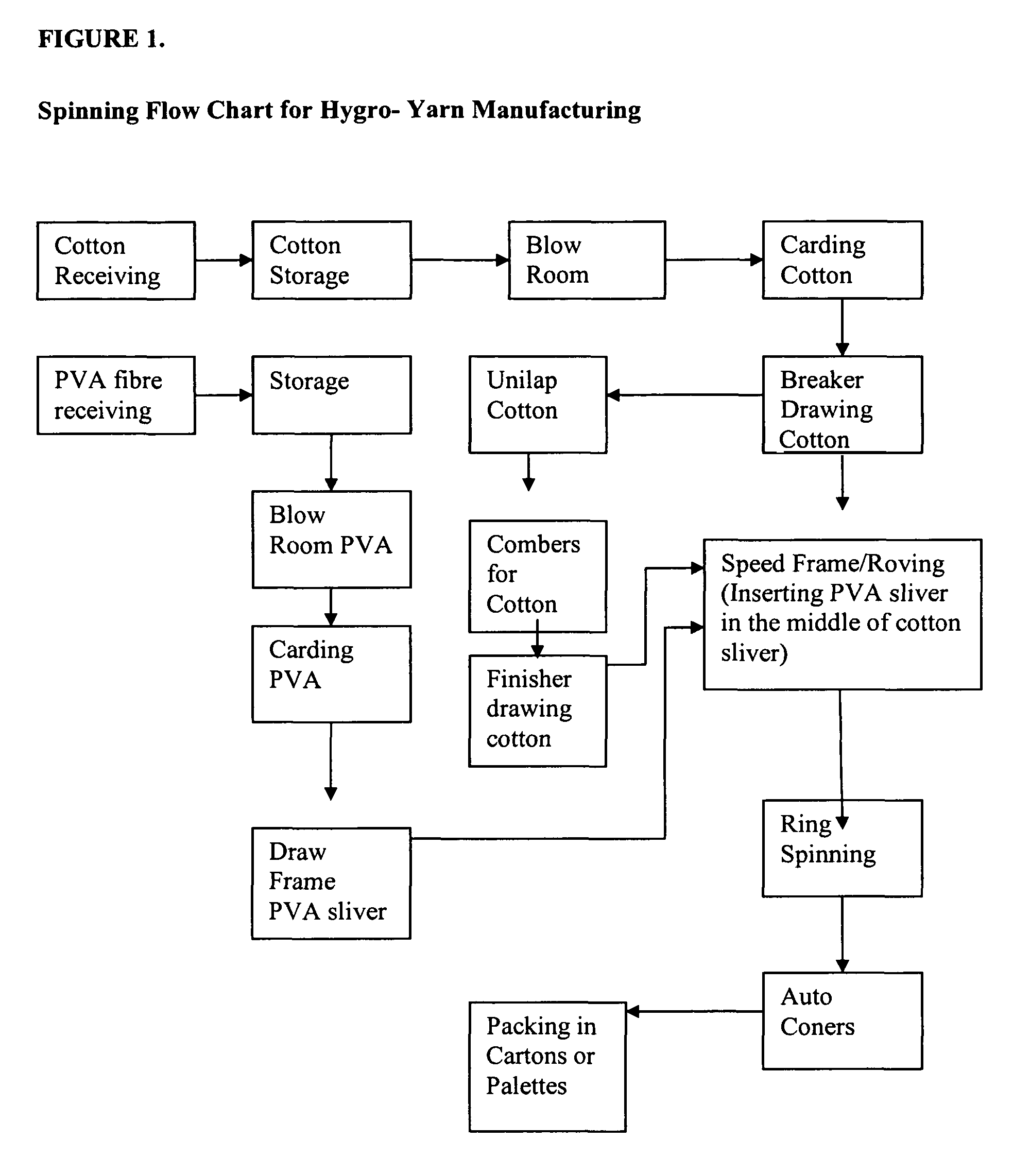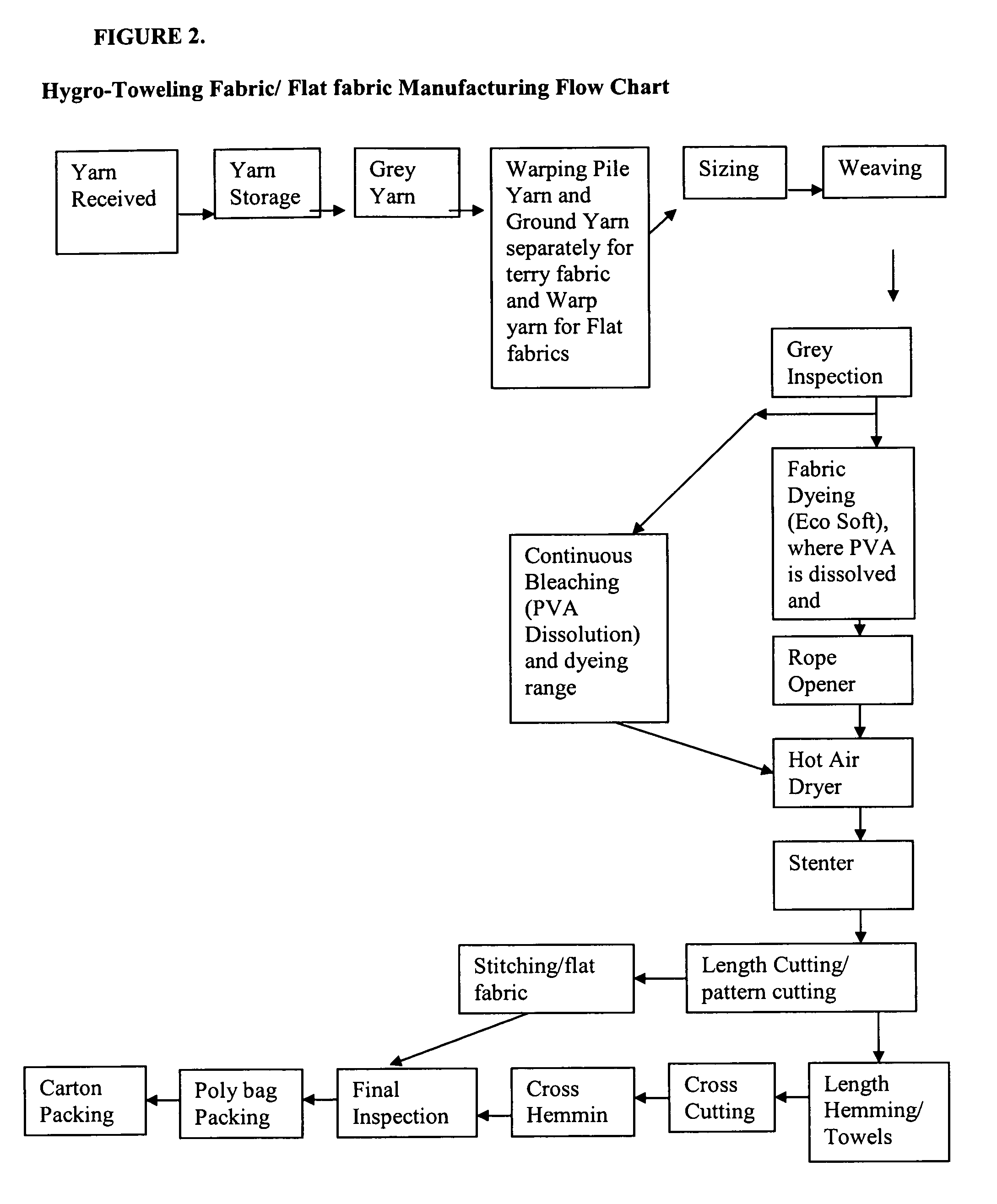Hygro materials for use in making yarns and fabrics
a technology of yarn and fabric, applied in the field of processes, can solve the problems of affecting the properties of yarn products, unable to achieve the proper configuration of pva fibers in the core, etc., and achieve the effects of high absorbency, quick drying, and increased bulk after drying
- Summary
- Abstract
- Description
- Claims
- Application Information
AI Technical Summary
Benefits of technology
Problems solved by technology
Method used
Image
Examples
examples
[0097]The following details illustrate typical pile yarn manufacturing parameters, towel construction parameters, and processing details.
[0098]Pile Yarn Manufacturing Parameters
[0099]The PVA fiber used in this example is 1.4 denier×38 mm fiber and Shankar 6 cotton of Indian origin with 2.5% span length of 28 to 32 mm, micronaire of 3.6 to 4.2, fibre strength of 21 Gtex to 24 Gtex, uniformity ratio of 45 to 47% and short fibre index 3.5 to 5.5. The cotton and PVA fibers were blended to produce a pile yarn containing 80% S-6 Combed Sliver (18% Noil) and 20% PVA (1.4 denier).
[0100]The spinning process parameters and yarn properties for PVA / Cotton Pile Yarn are described below.
[0101]Cotton Sliver Preparation (Combed):
[0102]The cotton used for the preferred embodiment of Ne 13's is Shankar-6 having the following parameters:
[0103]
2.5% span length28 to 32 mmMicronaire3.6 to 4.2Fibre Strength21 to 24 gtex.Uniformity ratio45 to 47.Short fibre index3.5 to 5.5%.
[0104]The cotton is processed th...
PUM
| Property | Measurement | Unit |
|---|---|---|
| temperature | aaaaa | aaaaa |
| cut length | aaaaa | aaaaa |
| cut length | aaaaa | aaaaa |
Abstract
Description
Claims
Application Information
 Login to View More
Login to View More - R&D
- Intellectual Property
- Life Sciences
- Materials
- Tech Scout
- Unparalleled Data Quality
- Higher Quality Content
- 60% Fewer Hallucinations
Browse by: Latest US Patents, China's latest patents, Technical Efficacy Thesaurus, Application Domain, Technology Topic, Popular Technical Reports.
© 2025 PatSnap. All rights reserved.Legal|Privacy policy|Modern Slavery Act Transparency Statement|Sitemap|About US| Contact US: help@patsnap.com



